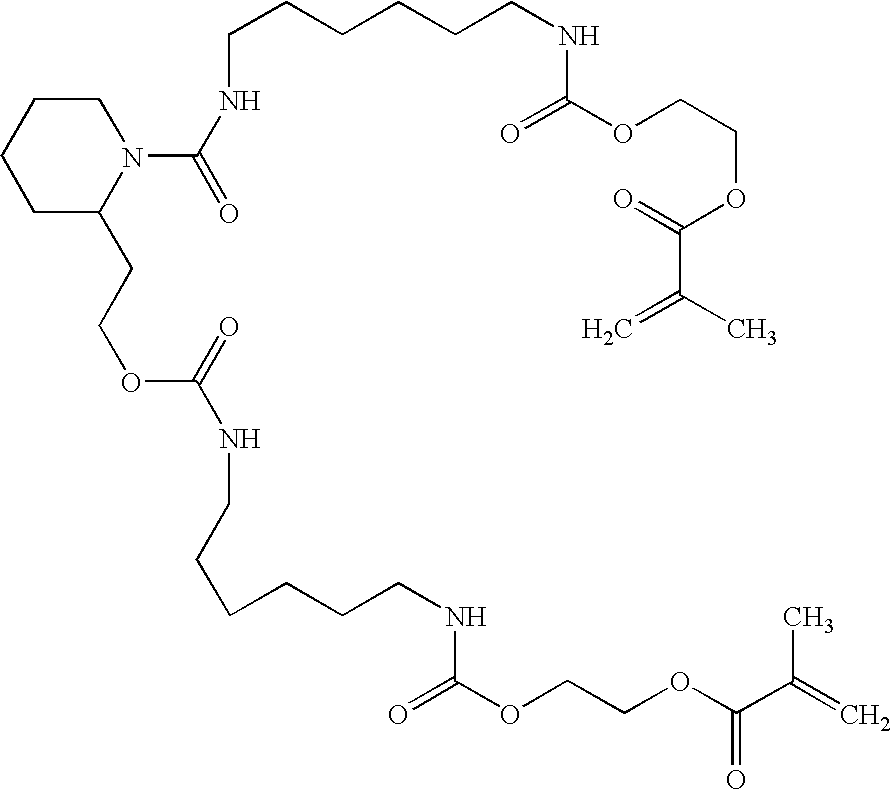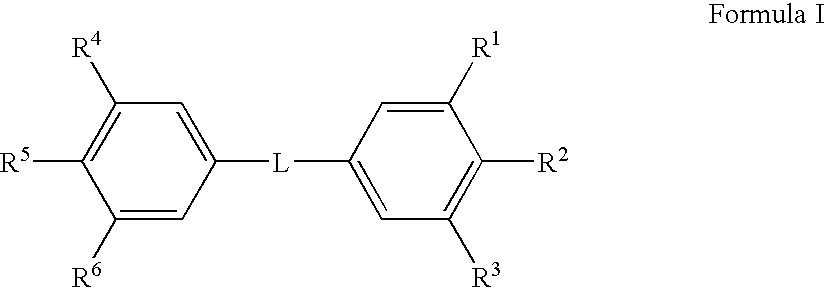Method for preparing lithographic printing plate precursors
a technology of photopolymer printing plate and precursor, which is applied in the direction of superimposed coating process, photomechanical equipment, instruments, etc., can solve the problems of limited image rendering on the plate, limited photopolymer digital plate technology, and limited resolution on the printed sheet, so as to achieve a low dot loss during printing and a high run length
- Summary
- Abstract
- Description
- Claims
- Application Information
AI Technical Summary
Benefits of technology
Problems solved by technology
Method used
Image
Examples
example 1
Preparation of Aluminum Support AS-01
[0198]A 0.3 mm thick aluminum foil was degreased by spraying with an aqueous solution containing 26 g / l NaOH at 65° C. for 2 seconds and rinsed with demineralised water for 1.5 seconds. The foil was then electrochemically grained during 10 seconds using an alternating current in an aqueous solution containing 15 g / l HCl, 15 g / l SO42− ions and 5 g / l Al3+ ions at a temperature of 37° C. and a current density of about 100 A / dm2. Afterwards, the aluminum foil was desmutted by etching with an aqueous solution containing 5.5 g / l NaOH at 36° C. for 2 seconds and rinsed with demineralised water for 2 seconds. The foil was subsequently subjected to anodic oxidation during 15 seconds in an aqueous solution containing 145 g / l of sulfuric acid at a temperature of 50° C. and a current density of 17 A / dm2, then washed with demineralised water for 11 seconds and post-treated for 3 seconds (by spray) with a solution containing 2.2 g / l of Polyvinyl phosphonic aci...
example 2
Photo Layers PL-04 to PL-13
[0223]The composition of the coating solutions for the photo layers PL-04 to PL-13 is shown in table VI. The wet coating thickness is 20 μm. After drying, a dry coating weight of 1.5 g / m2 is obtained.
TABLE VIPL-04PL-05PL-06PL-07PL-08Ingredients(g)(g)(g)(g)(g)Edaplan0.850.850.850.850.85MEK213.60213.60213.60213.60213.60FLUOMIX2.982.982.982.982.98Dowanol PM505.49505.49505.49505.49505.49FST426R13.0612.5512.0411.3711.01Mono Z1620139.53134.04128.55121.41117.57Heliogene blue67.4667.4667.4667.4667.46Hostanox 030.430.430.430.430.43HABI3.833.833.833.833.83MBT0.260.260.260.260.26KL717751.2057.6164.0172.3376.81wt. % binder* 20% 22.5% 25%28.25% 30%wt. % monomers*63.55%61.05%58.55% 55.3%53.55%wt. % monomers / 3.182.712.341.961.785wt. % binderPL-09PL-10PL-11PL-12PL-13Ingredients(g)(g)(g)(g)(g)Edaplan0.850.850.850.850.85MEK213.60213.60212.13211.74211.34FLUOMIX2.982.982.982.982.98Dowanol PM505.49505.49505.49505.49505.49FST426R10.499.989.488.968.45Mono Z1620112.08106.59101...
PUM
| Property | Measurement | Unit |
|---|---|---|
| wavelength | aaaaa | aaaaa |
| wavelength | aaaaa | aaaaa |
| wavelength | aaaaa | aaaaa |
Abstract
Description
Claims
Application Information
 Login to View More
Login to View More - R&D
- Intellectual Property
- Life Sciences
- Materials
- Tech Scout
- Unparalleled Data Quality
- Higher Quality Content
- 60% Fewer Hallucinations
Browse by: Latest US Patents, China's latest patents, Technical Efficacy Thesaurus, Application Domain, Technology Topic, Popular Technical Reports.
© 2025 PatSnap. All rights reserved.Legal|Privacy policy|Modern Slavery Act Transparency Statement|Sitemap|About US| Contact US: help@patsnap.com



